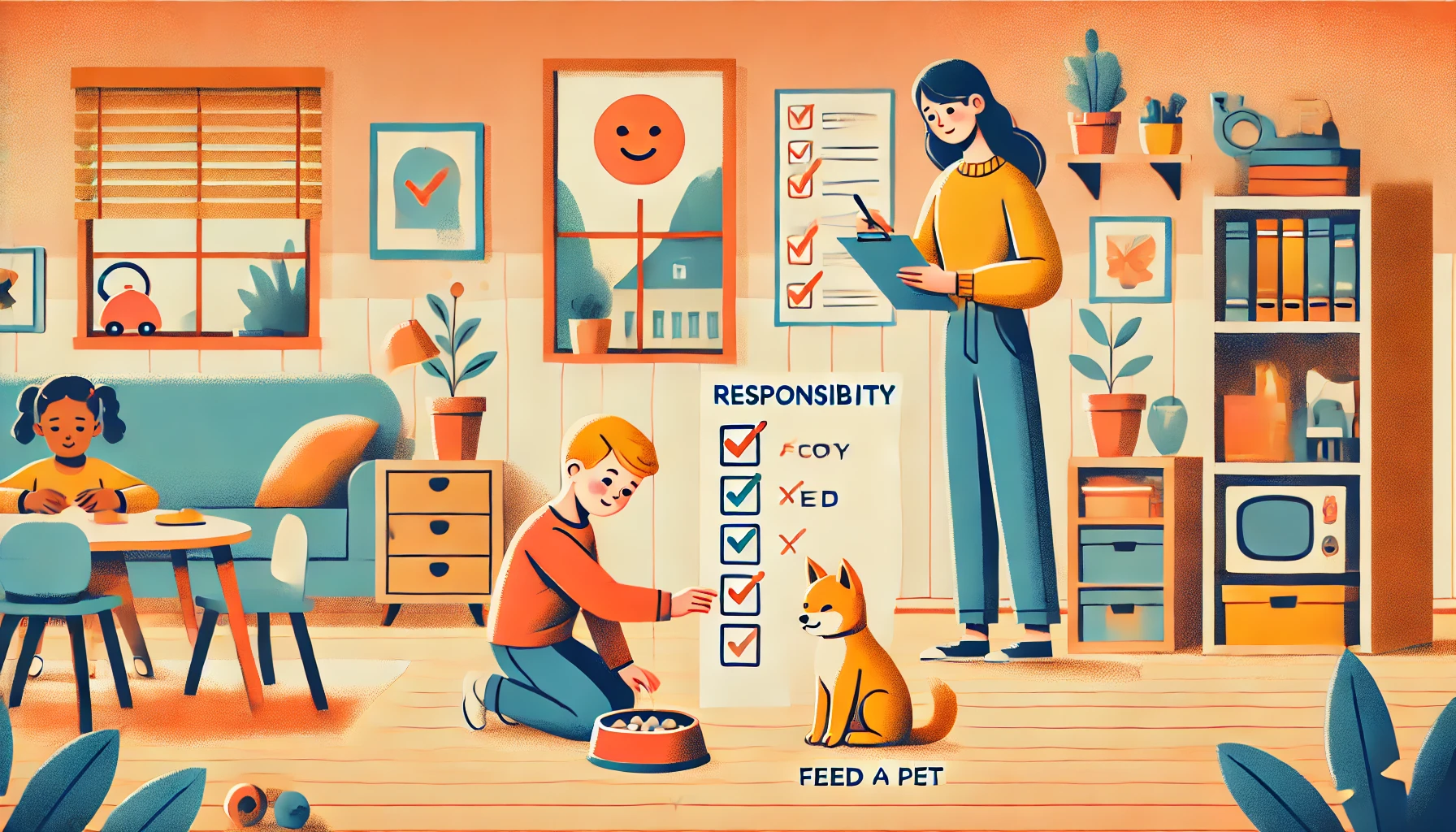How to Teach Young Children About Being Responsible and Taking Ownership
Teaching young children about responsibility helps them develop independence, accountability, and problem-solving skills. When kids learn to take ownership of their actions and duties, they become more confident, reliable, and prepared for future responsibilities. Parents can encourage responsibility through routines, positive reinforcement, and hands-on activities. In this article, we’ll explore practical ways to help children understand and practice responsibility.
Why Teaching Responsibility is Important
- Builds independence – Helps kids take care of themselves and their tasks.
- Encourages accountability – Teaches children to own their actions and decisions.
- Develops problem-solving skills – Helps kids think critically about their responsibilities.
- Prepares for future success – Encourages time management and organizational habits.
- Promotes self-confidence – Makes children feel capable and reliable.
1. Explain What Responsibility Means in Simple Terms
Helping children understand responsibility makes it easier for them to practice it.
Activity Idea:
- Use simple definitions: “Being responsible means taking care of things and doing what you say you will do.”
- Give examples like brushing teeth, putting toys away, and finishing homework.
- Ask, “What is something you take care of every day?”
What Kids Learn:
- That responsibility means following through on tasks.
- How their actions affect others and themselves.
- The importance of being dependable and keeping promises.
2. Assign Age-Appropriate Chores
Giving kids small responsibilities helps them feel important and capable.
Activity Idea:
- Create a chore chart with tasks like feeding a pet, making the bed, or helping set the table.
- Use a reward system where kids earn stars or stickers for completing responsibilities.
- Praise their effort: “You did a great job putting your toys away all by yourself!”
What Kids Learn:
- That taking care of tasks is an important part of life.
- How completing responsibilities feels rewarding.
- The value of contributing to a household or group.
3. Teach Kids to Take Responsibility for Their Actions
Helping children understand that their choices have consequences encourages accountability.
Activity Idea:
- When a child makes a mistake, instead of blaming, ask, “What can we do to fix this?”
- Role-play situations where kids must own up to their actions and find solutions.
- Reinforce phrases like “I made a mistake, but I can fix it.”
What Kids Learn:
- That mistakes are learning opportunities.
- How taking ownership leads to solutions instead of blame.
- The importance of making things right when something goes wrong.
4. Use Stories to Teach Responsibility
Books help children relate to characters who learn about responsibility.
Activity Idea:
- Read The Berenstain Bears and the Trouble with Chores by Stan & Jan Berenstain.
- Discuss how the characters handled responsibility and what they learned.
- Ask, “What’s one responsibility you can take on this week?”
What Kids Learn:
- That responsibility helps things run smoothly.
- How completing tasks benefits everyone.
- The connection between actions and consequences.
5. Encourage Problem-Solving and Decision-Making
Allowing children to make choices helps them take ownership of their actions.
Activity Idea:
- Let kids choose between two responsibilities (e.g., “Do you want to feed the pet or wipe the table?”).
- When they forget a task, ask, “What do you think should happen next?”
- Encourage thinking ahead: “What can you do to remember your school bag tomorrow?”
What Kids Learn:
- That their decisions impact their responsibilities.
- How to plan and organize tasks independently.
- The importance of learning from mistakes.
6. Be a Role Model for Responsibility
Children learn responsibility by watching how adults handle their own duties.
Activity Idea:
- Say, “I have a responsibility to go to work, just like you have a responsibility to clean up after playtime.”
- Show how you make a to-do list and complete tasks one by one.
- Admit mistakes and model accountability: “I forgot something, but I’ll fix it.”
What Kids Learn:
- That everyone has responsibilities to take care of.
- How to stay committed to tasks.
- The importance of being reliable and accountable.
7. Reinforce the Benefits of Being Responsible
Helping kids see the positive results of responsibility motivates them to continue.
Activity Idea:
- Say, “Because you remembered to water the plant, it’s growing so well!”
- Use a responsibility chart, where kids track completed tasks.
- Ask, “How does it feel to take care of something all by yourself?”
What Kids Learn:
- That responsibility brings a sense of accomplishment.
- How their efforts make a difference.
- The value of being reliable and dependable.
8. Praise and Reinforce Responsible Behavior
Encouraging children when they act responsibly helps them develop a lifelong habit.
Activity Idea:
- Say, “I’m proud of you for taking care of your toys without being asked!”
- Use positive reinforcement, like extra playtime for consistently completing tasks.
- Ask, “What responsibility would you like to take on next?” to encourage growth.
What Kids Learn:
- That responsibility is appreciated and valued.
- How completing tasks independently builds confidence.
- The motivation to continue being responsible.
Final Thoughts
Teaching young children about being responsible and taking ownership helps them build independence, confidence, and accountability. By giving age-appropriate tasks, encouraging problem-solving, and reinforcing responsible behavior, parents can guide children toward becoming capable and dependable individuals.
